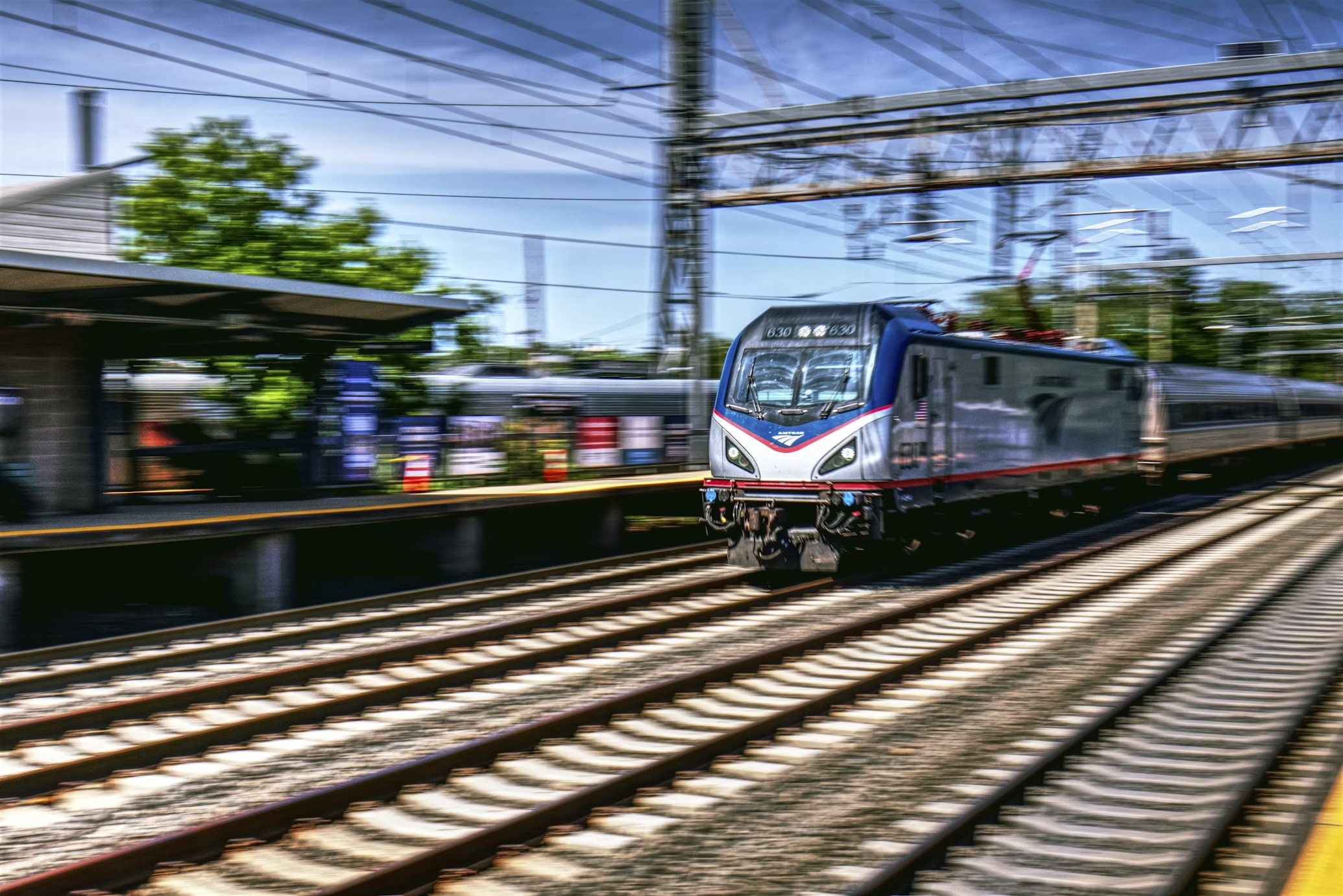Top destinations

Hassle-Free Train Booking & Changes!
Call NowAbout us
Amtrackss is your go-to guide for hassle-free travel. We're a community of travelers who share our tips, tricks, and experiences to help you make the most of your journeys. From finding the best deals to maximizing your travel rewards, we're here to simplify your travel planning. Let's take Train together!
Know More!
Train Reservations
Amtrak: America’s Premier Passenger Railroad Service
Amtrak: America’s Premier Passenger Railroad Service
Introduction
Amtrak, officially known as the National Railroad Passenger Corporation, is the primary provider of intercity passenger rail service in the United States. Established in 1971, Amtrak operates more than 300 trains daily, serving over 500 destinations across 46 states and three Canadian provinces. With a focus on comfort, convenience, and sustainability, Amtrak remains a vital transportation option for millions of travelers each year.
This comprehensive guide explores Amtrak’s history, routes, services, benefits, and future developments, providing valuable insights for both frequent and first-time passengers.
1. History of Amtrak
1.1 The Decline of Private Railroads
Before Amtrak, passenger rail service in the U.S. was operated by private railroad companies. However, after World War II, the rise of automobiles, airlines, and government-funded highways led to a sharp decline in rail travel. By the 1960s, most railroads were struggling to maintain passenger services, leading to poor conditions and reduced routes.
1.2 Creation of Amtrak (1971)
To prevent the collapse of passenger rail, the U.S. government passed the Rail Passenger Service Act of 1970, leading to the creation of Amtrak on May 1, 1971. Amtrak consolidated the remaining passenger services of 20 private railroads into a single national network.
1.3 Growth and Modernization
Over the decades, Amtrak expanded its services, introduced new trains (such as the Acela Express in 2000), and improved infrastructure. Despite financial challenges, Amtrak has remained a key player in U.S. transportation, especially in high-demand corridors like the Northeast Corridor (NEC).
2. Amtrak Routes and Services
Amtrak operates three primary types of services:
2.1 Northeast Corridor (NEC) – High-Speed & Regional Services
-
Acela Express: Amtrak’s only high-speed rail service (up to 150 mph), connecting Boston, New York, Philadelphia, and Washington, D.C.
-
Northeast Regional: A more affordable alternative with stops at additional cities.
2.2 Long-Distance Routes
These cross-country trains offer scenic views and sleeper accommodations:
-
California Zephyr (Chicago to San Francisco) – Famous for Rocky Mountain and Sierra Nevada views.
-
Empire Builder (Chicago to Seattle/Portland) – Passes through Glacier National Park.
-
Coast Starlight (Los Angeles to Seattle) – Stunning Pacific coastline scenery.
-
Southwest Chief (Chicago to Los Angeles) – Traverses the Southwest deserts.
2.3 State-Supported & Short-Distance Routes
Many routes are funded in partnership with states, such as:
-
Capitol Corridor (California)
-
Cascades (Pacific Northwest)
-
Hiawatha Service (Chicago-Milwaukee)
3. Onboard Amenities & Travel Classes
3.1 Seating Options
-
Coach Class: Standard seating with ample legroom, power outlets, and Wi-Fi (on most routes).
-
Business Class: Upgraded seating, priority boarding, and complimentary non-alcoholic drinks.
-
First Class (Acela Only): Premium seating, meals, and enhanced services.
3.2 Sleeping Accommodations (Long-Distance Trains)
-
Roomette: Compact private cabin with fold-down beds.
-
Bedroom: Larger space with in-room toilet/shower.
-
Bedroom Suite: Combines two bedrooms for families.
3.3 Dining & Lounge Cars
-
Dining Car: Full-service meals (included for sleeper passengers).
-
Café Car: Snacks, drinks, and light meals for purchase.
-
Observation Car: Scenic lounge with panoramic windows.
3.4 Wi-Fi & Entertainment
Most trains offer free Wi-Fi, though speeds vary. Passengers can also enjoy:
-
Power outlets at every seat.
-
Quiet Cars for a peaceful journey.
-
National Park Service guides on select routes.
4. Benefits of Traveling with Amtrak
4.1 Comfort & Relaxation
-
More legroom than airlines.
-
Freedom to walk around and socialize.
-
No TSA security lines.
4.2 Scenic Views
-
Unlike highways or flights, trains offer breathtaking landscapes.
-
Popular for fall foliage, coastal views, and mountain passes.
4.3 Environmental Benefits
-
Trains produce far fewer emissions per passenger than cars or planes.
-
Amtrak is investing in sustainable fuel and energy-efficient trains.
4.4 Affordability & Discounts
-
Competitive pricing compared to flights.
-
Discounts for seniors, students, military, and children.
-
Rail Passes for unlimited travel within a set period.
5. Challenges & Future of Amtrak
5.1 Infrastructure & Funding Issues
-
Many tracks are owned by freight railroads, causing delays.
-
Aging infrastructure requires billions in upgrades.
5.2 Expansion Plans
-
Amtrak Connects US: A proposal to expand service to new cities by 2035.
-
High-Speed Rail Development: Potential new routes in California, Texas, and the Southeast.
5.3 New Fleet & Technology
-
Avelia Liberty Trains: Next-gen high-speed trains for the NEC.
-
Improved Wi-Fi & Digital Ticketing.
6. How to Book & Travel Tips
6.1 Booking Tickets
-
Online (Amtrak.com or mobile app).
-
At stations or via phone (1-800-USA-RAIL).
-
Best deals: Book early, use discounts, and check promotions.
6.2 Boarding & Luggage Policy
-
2 carry-ons + 2 personal items allowed (no weight fees!).
-
Checked baggage available on most routes.
6.3 Tips for First-Time Riders
-
Arrive 30-45 minutes early.
-
Bring snacks, entertainment, and a jacket (trains can get cold).
-
Download the Amtrak app for real-time updates.

















